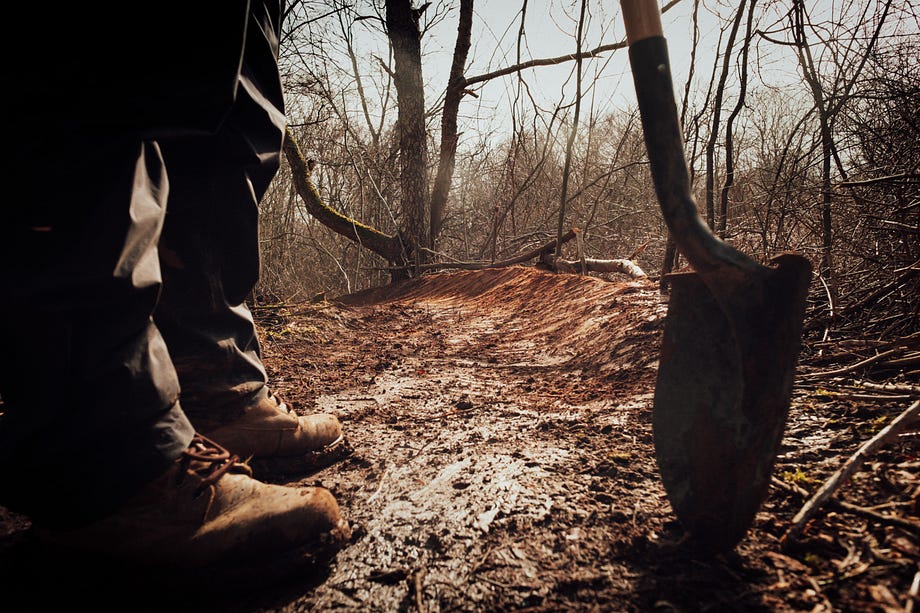Life tore them apart, death bonded them together

Mary Neilson, at 22-years old, was a psychology student at the University of Western Australia and, strangely enough, it was her car that was going to get her killed.
Not in a car crash, but from the person she met at a spare parts yard. She went there to get some cheap tires, ended up meeting an enigmatic worker, took his phone number, and went to his house on Moorhouse Street a while later on October 6, 1986.
She was surprised when she arrived there to find the man’s wife also waiting for her, expectant. The wife introduced herself as Catherine. Mary didn’t know what to do, the situation unusual, and she was unsure whether to leave or to stay.
She should have left.
Together, David John Birnie and his wife, Catherine Margaret Birnie, overpowered Mary Nielsen, gagged and chained her to the bed. Catherine watched as her husband raped their guest. Afterward, they transported her on Albany Highway to Bedfordale where David raped her again, then strangled her to death with a nylon cord.
If she had not gone to the house of David and Catherine Birnie on Moorhouse Street, Mary Nielson would have achieved her psychology degree a year later. As it was, she was buried in a shallow grave at the side of the highway waiting for justice.

The murderers forgot about Mary Nielsen as soon as the last shovel full of dirt was patted down.
Two weeks later they spotted their next victim walking along the highway in Claremont, hitchhiking, not a care in the world. The daughter of one of the best ophthalmic surgeons in the country, 16-year-old Susannah Candy’s bright future was erased the moment she accepted the lift from the harmless-looking couple.
At knife-point, she was restrained, taken back to Moorhouse Street, and suffered the same fate as Mary Nielsen. Only this time, David gave his wife the opportunity to end the young girl’s life by strangulation after drugging her to make her more compliant.
Susannah Candy, leaving behind grieving parents and her siblings, was buried alongside Mary Nielsen, her young life brutally cut short, waiting like her neighbor for justice.
For David and Catherine Birnie, rape and murder were now in their blood, another victim urgently required to satisfy their desires.
But why were they so evil?
David’s family life growing up was dysfunctional, to say the least. He and his four siblings often went without cooked meals, lived in squalid conditions and his mother was far from loving, apart from when she was giving sexual favors to taxi drivers in lieu of paying the fare, that is.
David met Catherine when she was just 12-years-old in the 60s when his family moved to another part of Perth, but they were pulled apart by her disapproving father and circumstances beyond their control.
He met his first wife after a brief spell in prison for a few misdemeanor felonies, not for the attempted rape of a pensioner that he got away with, nor for the cruelty he had inflicted on the horses where he worked as an apprentice jockey.

Catherine’s life trajectory was similar in that she met her husband, Donald McLaughlin, after her time spent in prison. They had seven children together.
In 1985, she divorced Donald, legally changed her surname to Birnie, and reunited with David after years apart. It wasn’t long before they began to fantasize, plot, and plan how they could commit their first rape and murder together.
Mary Nielsen was their first and they reveled in it.
Susannah Candy was their second, and they began to feel invincible.
Noelene Patterson and Denise Brown were victims three and four, Catherine taking a perverse pleasure in the death of Noelene, fearing that David was getting too close to their captive after repeatedly raping her, so unhinged was her mind.
The death of Denise Brown was the most gruesome of all. Before being interred, she was stabbed in the neck instead of being strangled and then placed in her shallow grave.
Moments later, she sat up, still very much alive.
David Birnie reacted instinctively and battered her repeatedly about the head until he knew for sure that she was dead.
Shocked at the gruesome nature of the killing, her lover splattered with blood, breathing heavily from the exertion of bludgeoning someone to death, Catherine began to have second thoughts about carrying out any further killings.
But her need to torture, to watch another human being suffer, was just too great, so she didn’t relent for long.
Kate Moir was victim number 5, almost.

She was captured, raped, and held captive, and it was only going to be a matter of time before she was drugged, strangled, and buried in a shallow grave.
Seizing upon a small mistake by her captors, she managed to escape through a window after Catherine, alone in the house apart from Kate, answered the call of her drug dealer at the front door and forgot to handcuff her to the bed.
Disheveled, panicking, she fled to the nearest store where the police were called. Unfortunately, despite her cries of rape and abduction, the officers were skeptical about her story. If it wasn’t for the young constable taking notes, Laura Handcock, there may have been no follow-up. Luckily, even though she didn’t recognize the names, which were false, she knew the address.
The Birnie’s were brought in for questioning, their answers conflicting from the start. Catherine denied knowing her, even though a picture drawn by Kate Moir was found hidden in the house as proof that she had been there.
While David admitted that she had been in the house consensually.
Detective Sergeant Vince Katich focussed on David Birnie, believing that he would be the one to crack first. But the suspect stuck to his tall tale, and the detective just couldn’t poke enough holes in it to trip him up.
So, late into the night, with no progress being made and concerned that these two killers were about the slip through his fingers, he decided to go back to basics — and simply asked where the bodies were buried.
Imagine his surprise when David Birnie, perhaps a modicum of guilt worming its way out of his scarred soul, confessed to the murders of the four women.
The four graves were uncovered, a trial date was set, and a sentence of life in prison was handed down to the Moorhouse Murderers. For their victims, finally, justice was served.
For David John Birnie, life in prison was spent with him mainly being confined to solitary confinement, reviled as he was by the other prisoners who were eager to do him bodily harm. In October 2005, he was found hanged in his cell.

Catherine Birnie at first attempted to be a model inmate, understanding that under Australian law an inmate can become eligible for parole every three years. She tried but was refused constantly, her crimes making her one of Australia’s worst female serial killers, and just too dangerous to be let loose in society. Ever.
The Moorhouse Murders, as they came to be known in the papers nationwide, chronicled the murders of four promising women and a fifth potential victim, all carried out by two depraved individuals who were harmless apart, but heartlessly ruthless when together.
